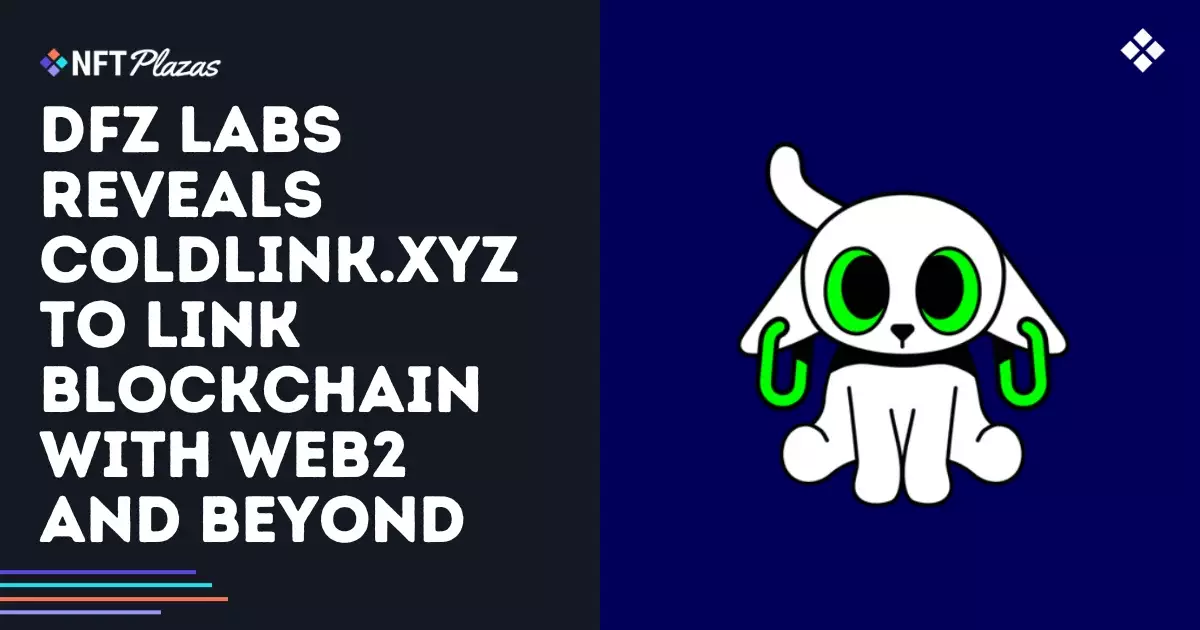In an epoch where the NFT industry is in constant flux, DFZ Labs has unveiled a tool that promises to alter the landscape of user identity verification within the blockchain realm—Coldlink.xyz. Its premise is straightforward yet revolutionary: to allow users to connect blockchain wallet addresses with a plethora of real-world identifiers without necessitating wallet connectivity, approval of smart contracts, or digital signatures. This ambitious venture could spell a new era of operational freedom across digital ecosystems, allowing seamless movement between the increasingly blurred lines of online and offline interactions.
However, while these prospects appear shiny and full of promise, they also raise pertinent questions regarding security, data privacy, and the sheer accessibility of such systems. Why would the company, which initially targeted its tool for its projects, now open its gates to external entities? Is it purely altruistic, or is there a commercial motive lurking behind this innovation?
Beta Testing: A Double-Edged Sword
Currently in beta testing and being evaluated by over 150 creators and organizations, Coldlink.xyz has attracted attention from industry heavyweights such as Punks DAO and Deadfellaz. This testing phase is crucial, as it serves as both a proving ground and a marketing strategy. Yet, one cannot help but question the implications of such a swift rollout. Is inviting a cadre of prominent players a sound strategy for stress-testing a tool that seeks to redefine user verification, or does it elevate risks by exponentially increasing the number of connections, thereby magnifying potential vulnerabilities?
Moreover, is this approach democratizing access to sophisticated tools, or is it simply steering attention towards elitism in an industry that is already grappling with issues of accessibility? The answer lies somewhere within the intersection of innovation and caution, urging industry insiders to ponder whether speed should overshadow safety.
Interoperability: A Boon or a Bane?
Betty, CEO of DFZ Labs, describes Coldlink.xyz as a vehicle for breaking barriers between digital spaces. She claims it unlocks interoperability that has been long anticipated since the NFT boom in 2021. Herein lies a significant question: does greater interoperability genuinely empower users, or does it risk creating an ecosystem too interconnected for its own good, thus giving rise to new vulnerabilities?
Given the emerging trends of digital asset integration across platforms—both web3 and web2—while aiming to protect against asset loss and KYC burdens, one might ask: who exactly benefits from such a tool? More significantly, does it cater primarily to the creators and developers who stand to gain more from simplifying complex operations, rather than to the end users whose identities could be at stake?
Blockchain’s Wild West: Security Risks Unveiled
While Coldlink.xyz operates without requiring any on-chain transactions or blind signatures, this might instill a false sense of security among its users. The apparent reduction of risk doesn’t eliminate it. Users might be lulled into complacency, believing that they are impervious to tracking and data breaches. In an age where data protection is paramount, we must question whether this tool’s convenience comes devoid of significant trade-offs.
As one contemplates the move to integrate various identifiers—from social media handles to event ticket numbers—the potential for exploitation grows. Should we trust a system that minimizes friction but may inadvertently expose private information or lead to misuse of linked assets? Are users merely lab rats in an experiment meant to refine a commercially appealing product?
Bridging Digital Assets and Real-World Situations
The tool’s ambition to link digital assets to offline identifiers positions it as a bridge between the virtual and physical realms. Yet, this ambition raises pragmatic concerns. Integrating digital and physical identifiers sounds appealing, but how effective will it be in practice? Are existing infrastructures prepared for such integrations?
Coldlink.xyz hints at a future where vast swathes of users can engage in token-gated experiences effortlessly, but one must consider the societal implications of a tool that combines the digital and physical spheres. Could it encourage new forms of digital classism, where access to exclusive digital opportunities becomes contingent upon possessing specific identifiers or assets?
Is our society ready to embrace such profound changes without thorough examination? Though the potential is vast, we must tread cautiously as we navigate an ever-evolving landscape that balances accessibility with security and ethical considerations.

